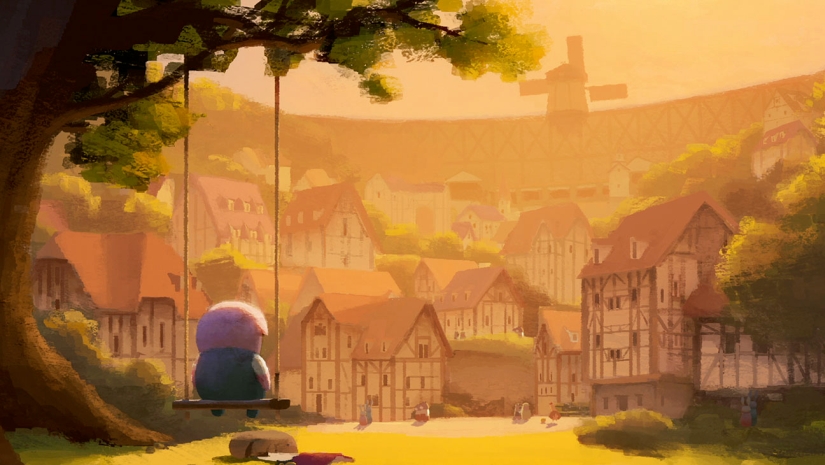It was announced last week that the Oscar-nominated animated short The Dam Keeper will be expanding into a feature film as well as two graphic novels. This was great news given that it’s been a few weeks since The 87th Academy Awards and I was afraid that The Dam Keeper might get forgotten. That’s the fate of so many short films at The Oscars, but The Dam Keeper, directed by Robert Kondo and Dice Tsutsumi, is a remarkably poignant and unforgettable film.
This isn’t to say that Disney’s Feast, which won the Oscar for Best Animated Short, isn’t good. It’s cute and quaintly done, yet Feast is familiar to a fault—kind of like the beginning of Up but not as emotionally full or earned; climaxing sort of like the Disney short Paperman, but with a dog and parsley instead of paper airplanes and lipstick. The Dam Keeper looks and feels like the start of something new—the first yawp from the studio Tonko House—and it risks more in its 18-minute run time because of what it’s trying to say about being a better human being.
You can buy The Dam Keeper on Amazon, iTunes, and Vimeo and view it for yourself, but I’d like to offer a brief appreciation of the film.
[iframe id=”https://www.youtube.com/embed/eAidtk0GpUQ” align=”center” mode=”normal” autoplay=”no” maxwidth=”825″]
The Dam Keeper centers on the life of an orphaned pig who works inside of a giant fan at the edge of town atop a dam. He has to crank and set the fan regularly in order to keep a poisonous smog away. He’s isolated and bullied at school (he’s the archetype of the big kid, the quiet kid, the different kid that you knew or might have been), but he finds a friend in a fox. By the end, The Dam Keeper winds up being an exploration of loneliness, friendship, the absurdities of bullying, how people deal with depression, and, at least to me, our fundamental moral obligations to others.
The whole film looks like a picture book come to life, a world built out of paint. This is all thanks to the animation style, which eschews computer animation and was primarily hand-painted instead. The Dam Keeper consists of more than 8,000 individual paintings, with so many organic strokes built into the movements of the characters and the backgrounds. The animators had to spend time learning to draw in the same style, painting together to ensure a consistent look to the film.
Whether intentional or not, this act of collective and obsessive labor seems to be referenced in one of The Dam Keeper‘s memorable moments: as the pig and the fox draw together, the real world blurs into something diaphanous, like air and like water, and there’s only laughter and the joy of connection and the careless play of making art.

There’s a similar care with The Dam Keeper‘s score by Zach Johnston and Matteo Roberts, which is sort of like a blend of Jon Brion (Paranorman) and Joe Hisaishi (the films of Hayao Miyazaki). Throughout, the score serves as an emotional scaffold. There’s a childlike sense about it, as if profound emotions are contained in the music and the melody is there to convey what language can’t process.
The Dam Keeper had a peculiar way of sneaking up on me, and feeling personal even though it was about a pig and a fox. There’s something to be said about the successful use of animals as human analogs. They’re blank and unparticularized as actual people per se, which allows viewers to read their own lives or experiences into the existence of something non-human. We’re forced to think “When did I feel like that?” or “When did someone I care about feel something like that?” This is one of those subtle and necessary exercises of empathy unique to good metaphors and fitting analogs.
There are unexpectedly moving moments of The Dam Keeper that stick with me weeks later, and I think they work because of this exercise of empathy. Grounding the film in reality rather than animals and the fantastical conceit would have undermined the power of the story. Metaphors can often be more powerful than reality. Sometimes the reality of our emotional lives requires the framework of fantasy, fable, or fairy tales to be revealed to us, and The Dam Keeper does this essential, humanizing work beautifully.
